Antioxidant Capacity of Two Novel Bioactive Fe(III)-Cyclophane Complexes
Abstract
:1. Introduction
2. Results and Discussion
2.1. Synthesis of the PO and PC Iron Complexes
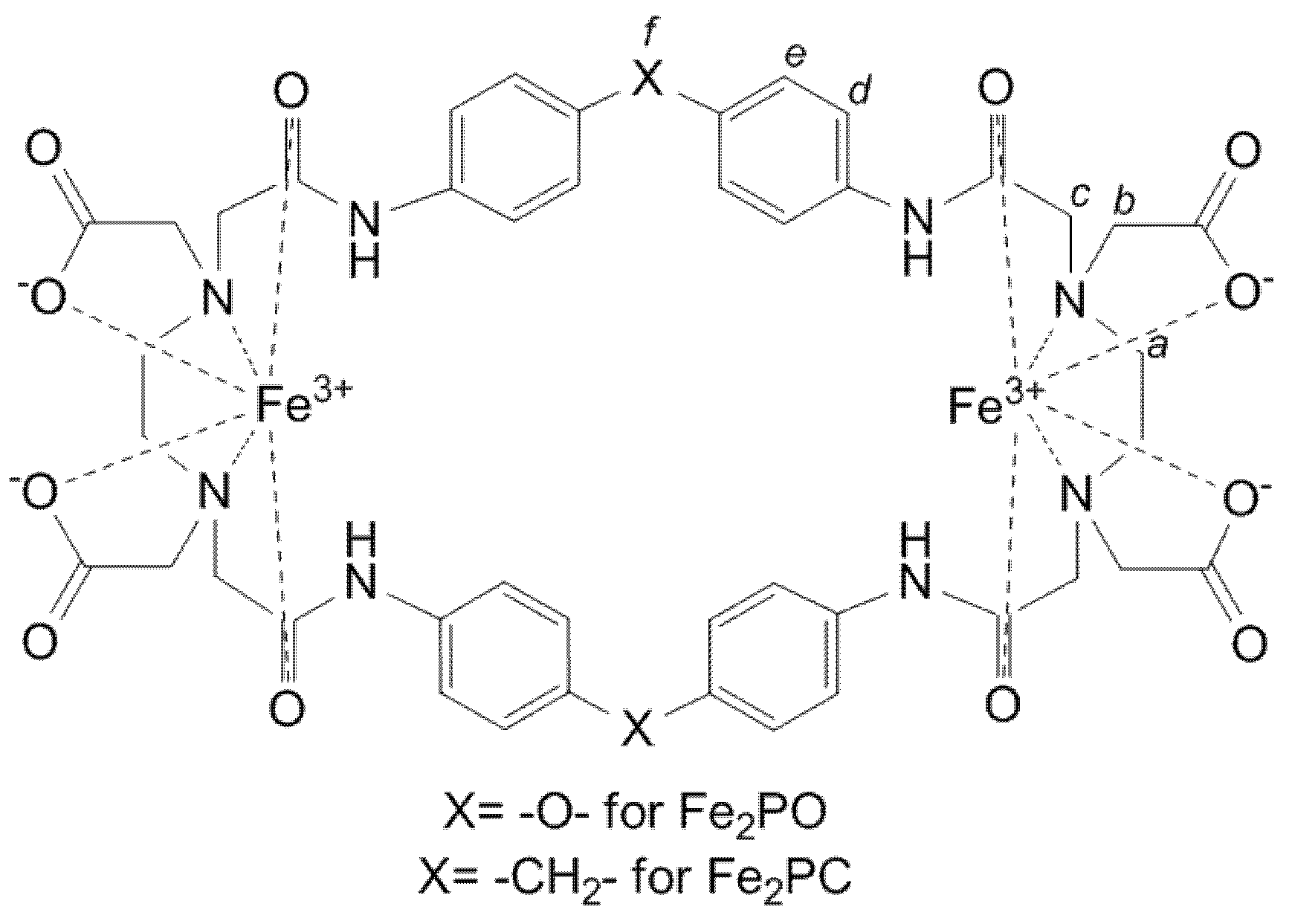
2.2. Mass Spectrometry
2.3. Electron Paramagnetic Resonance (EPR)
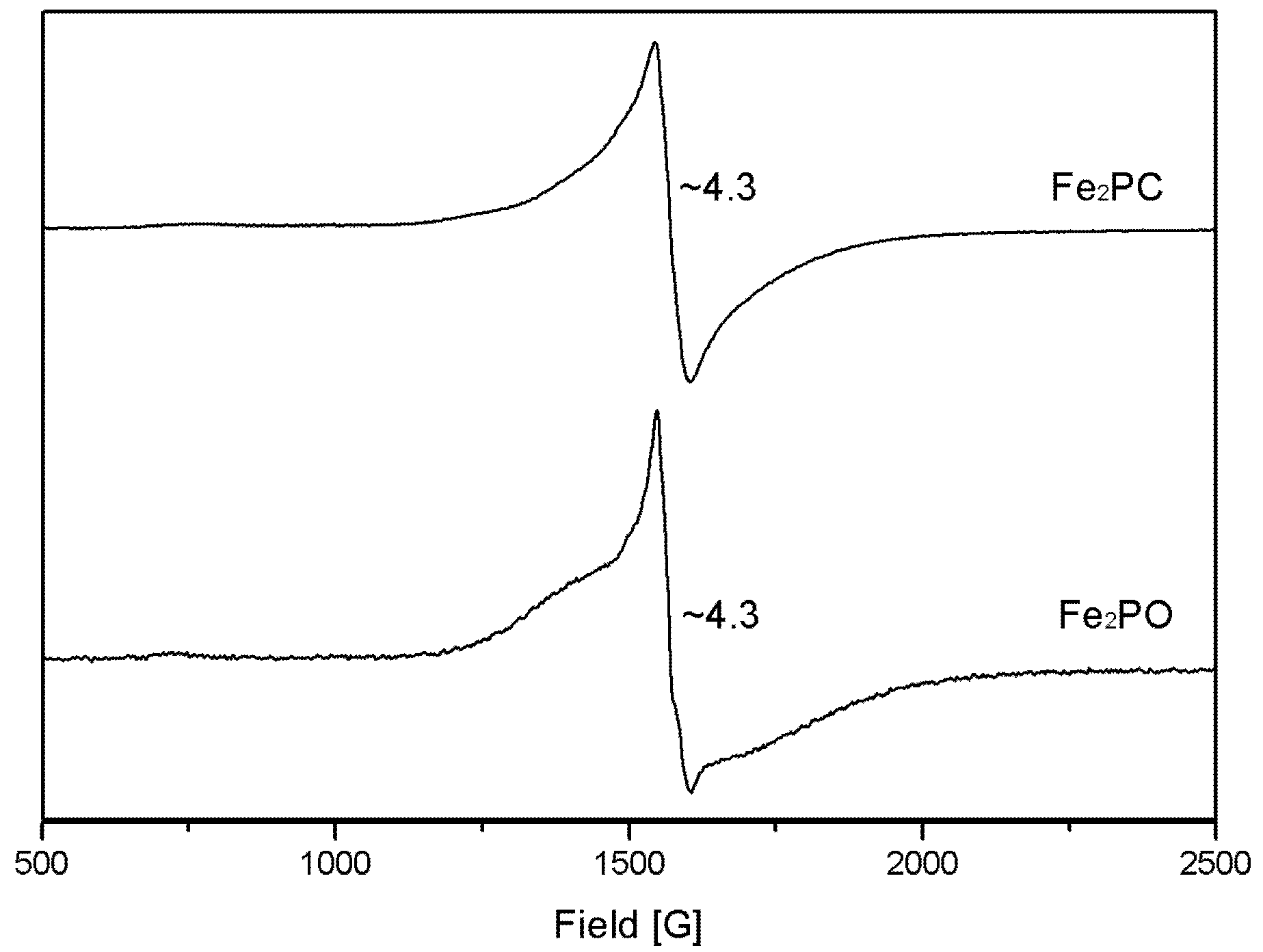
2.4. Infrared Spectroscopy
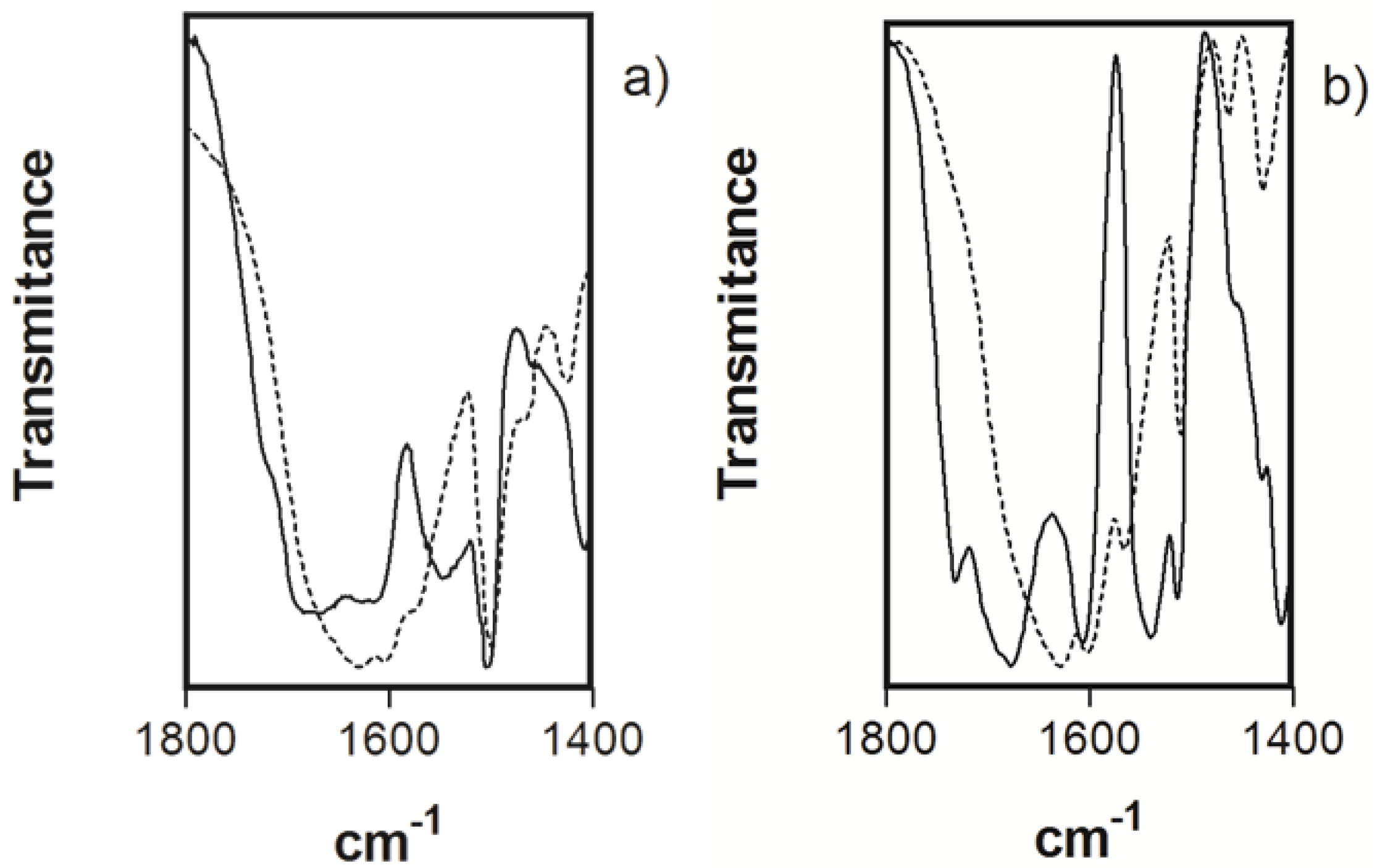
2.5. Electronic Absorption Spectra



2.6. Antioxidant Capacity Assay

2.7. Superoxide Dismutase-Like Activity
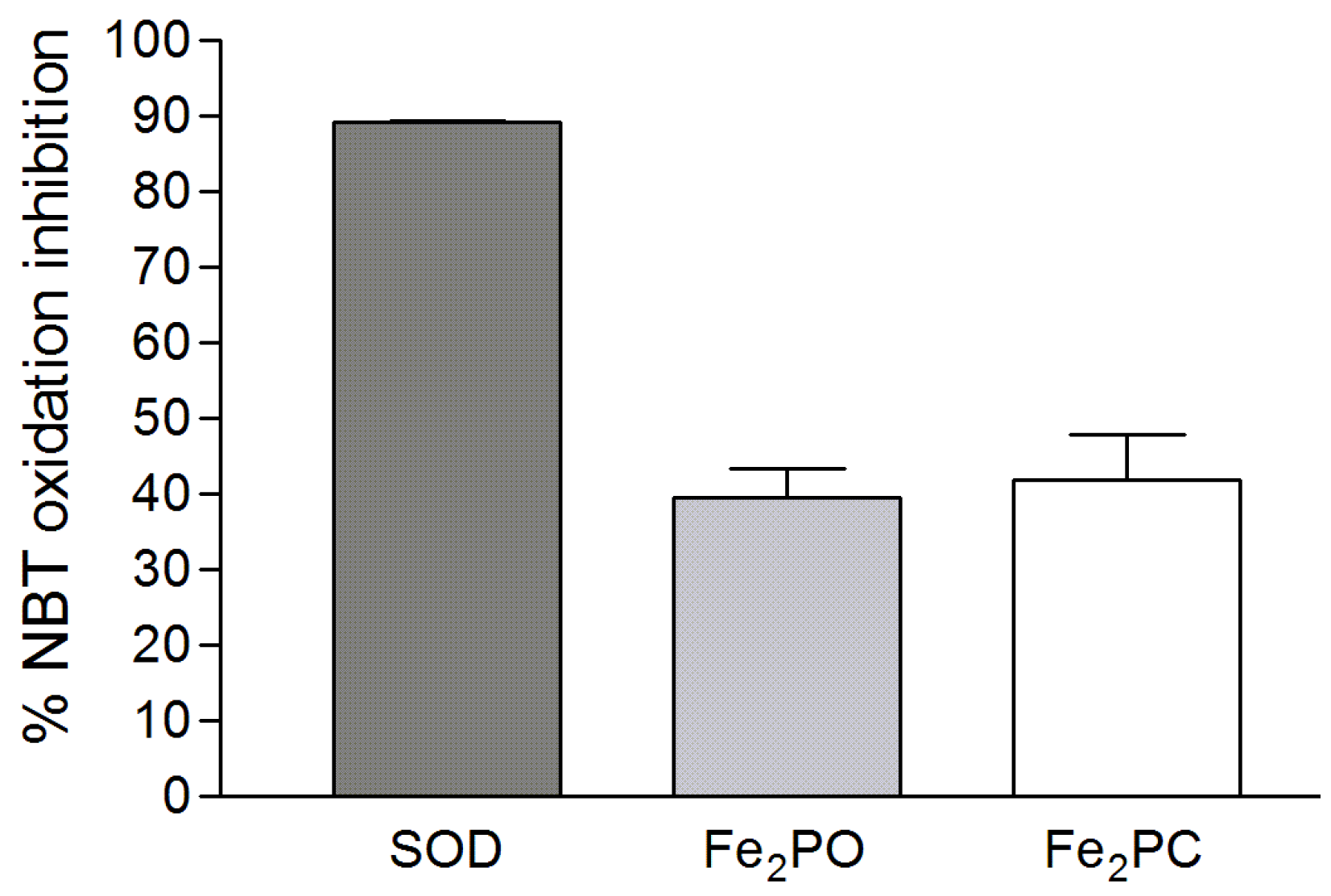
2.8. Peroxidase-Like Activity
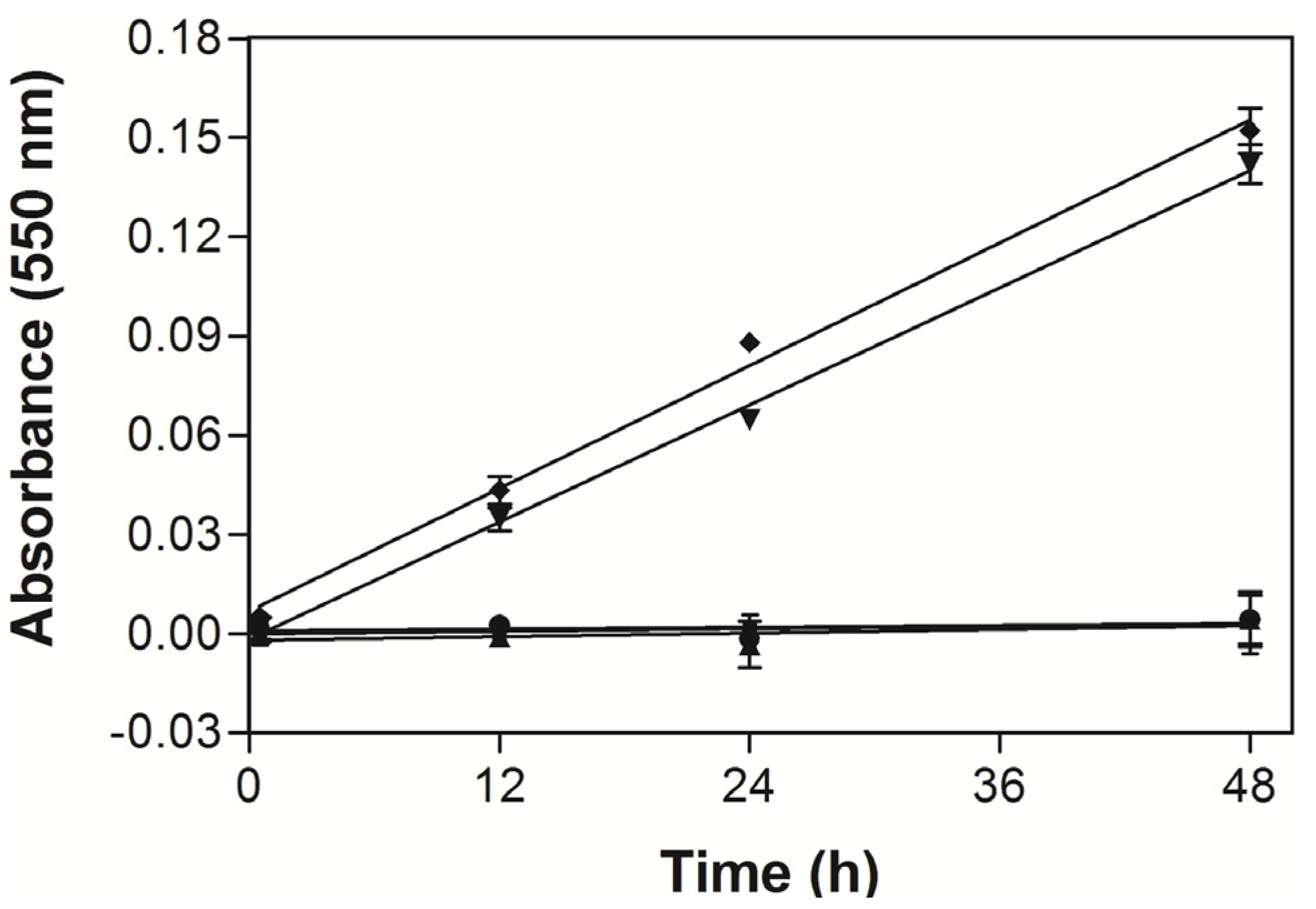
2.9. Cellular Assay
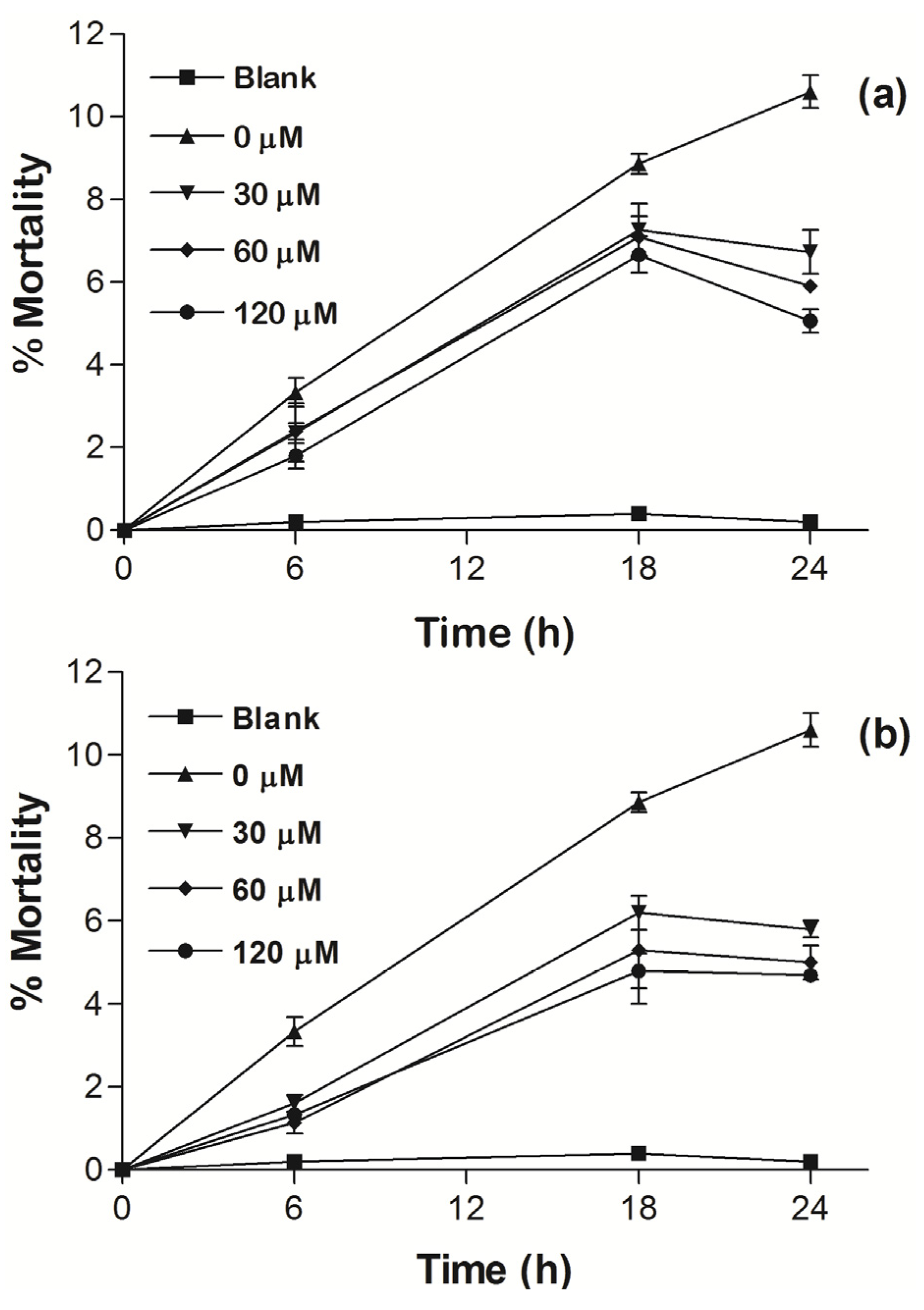
3. Experimental
3.1. Syntheses of Cyclophanes and Iron Complexes
3.2. Spectroscopic Measurements
3.3. Antioxidant Capacity Assay
3.4. Superoxide Dismutase-Like Activity
3.5. Peroxidase-Like Activity
3.6. Cellular Assay
4. Conclusions
Acknowledgments
- Sample Availability: Samples of the compounds PO, PC, Fe2PO and Fe2PC are available from the authors.
References
- Fernandes, A.S.; Gaspar, J.; Cabral, M.F.; Caneiras, C.; Guedes, R.; Rueff, J.; Castro, M.; Costa, J.; Oliveira, N.G. Macrocyclic copper (II) complexes: Superoxide scavenging activity, structural studies and cytotoxicity evaluation. J. Inorg. Biochem. 2007, 101, 849–858. [Google Scholar] [CrossRef]
- Jakab, I.N.; Lrincz, O.; Jancsó, A.; Gajda, T.; Gyurcsik, B. Approaching the minimal metal ion binding peptide for structural and functional metalloenzyme mimicking. Dalton Trans. 2008, 2008, 6987–6995. [Google Scholar]
- Rafique, S.; Idrees, M.; Nasim, A.; Akbar, H.; Athar, A. Transition metal complexes as potential therapeutic agents. Biotechnol. Mol. Biol. Rev. 2010, 5, 38–45. [Google Scholar]
- Muscoli, C.; Cuzzocrea, S.; Riley, D.P.; Zweier, J.L.; Thiemermann, C.; Wang, Z.Q.; Salvemini, D. On the selectivity of superoxide dismutase mimetics and its importance in pharmacological studies. Br. J. Pharmacol. 2003, 140, 445–460. [Google Scholar] [CrossRef]
- Sugich-Miranda, R.; Sotelo-Mundo, R.R.; Silva-Campa, E.; Hernández, J.; Gonzalez-Aguilar, G.A.; Velazquez-Contreras, E.F. Antioxidant capacity of binuclear Cu (II)-Cyclophanes, insights from two synthetic bioactive molecules. J. Biochem. Mol. Toxicol. 2010, 24, 379–383. [Google Scholar]
- Rodriguez, C.; Mayo, J.C.; Sainz, R.M.; Antolin, I.; Herrera, F.; Martin, V.; Reiter, R.J. Regulation of antioxidant enzymes: A significant role for melatonin. J. Pineal Res. 2004, 36, 1–9. [Google Scholar] [CrossRef]
- Inoue, M.B.; Velazquez, E.F.; Medrano, F.; Ochoa, K.L.; Galvez, J.; Inoue, M.; Fernando, Q. Binuclear copper (II) chelates of amide-based cyclophanes. Inorg. Chem. 1998, 37, 4070–4075. [Google Scholar]
- Kanamori, K.; Dohniwa, H.; Ukita, N.; Kanesaka, I.; Kawai, K. The raman spectral study on the solution structure of iron (III)-EDTA complexes. Bull. Chem. Soc. Jpn. 1990, 63, 1447–1454. [Google Scholar] [CrossRef]
- Inoue, M.B.; Medrano, F.; Inoue, M.; Raitsimring, A.; Fernando, Q. A New Chelating Cyclophane and Its Complexation with Ni2+, Cu2+, and Zn2+: Spectroscopic Properties and Allosterism via Ring Contraction. Inorg. Chem. 1997, 36, 2335–2340. [Google Scholar]
- Bou-Abdallah, F.; Chasteen, N.D. Spin concentration measurements of high-spin (g' = 4.3) rhombic iron (III) ions in biological samples: Theory and application. J. Biol. Inorg. Chem. 2008, 13, 15–24. [Google Scholar] [CrossRef]
- Namuswe, F.; Hayashi, T.; Jiang, Y.; Kasper, G.D.; Sarjeant, A.A.N.; Moënne-Loccoz, P.; Goldberg, D.P. Influence of the Nitrogen Donors on Nonheme Iron Models of Superoxide Reductase: High-Spin FeIII-OOR Complexes. J. Am. Chem. Soc. 2009, 132, 157–167. [Google Scholar]
- Dhungana, S.; Heggemann, S.; Gebhardt, P.; Möllmann, U.; Crumbliss, A.L. Fe (III) coordination properties of a new saccharide-based exocyclic trihydroxamate analogue of ferrichrome. Inorg. Chem. 2003, 42, 42–50. [Google Scholar] [CrossRef]
- Ronaghi, M. Excel® Worksheets for Spectrometry 2012; Universidad de Sonora: Hermosillo, Sonora, México, 2012. [Google Scholar]
- Bull, C.; McClune, G.J.; Fee, J.A. The mechanism of iron EDTA catalyzed superoxide dismutation. J. Am. Chem. Soc. 1983, 105, 5290–5300. [Google Scholar] [CrossRef]
- Sakamoto, A.; Sakurao, S.; Fukunaga, K.; Matsubara, T.; Ueda-Hashimoto, M.; Tsukamoto, S.; Takahashi, M.; Morikawa, H. Three distinct Arabidopsis hemoglobins exhibit peroxidase-like activity and differentially mediate nitrite-dependent protein nitration. FEBS Lett. 2004, 572, 27–32. [Google Scholar] [CrossRef]
- Beyer, W.F.; Fridovich, I. Assaying for superoxide dismutase activity: Some large consequences of minor changes in conditions. Anal. Biochem. 1987, 161, 559–566. [Google Scholar] [CrossRef]
- Aispuro-Hernandez, E.; Garcia-Orozco, K.D.; Muhlia-Almazan, A. Shrimp thioredoxin is a potent antioxidant protein. Comp. Biochem. Physiol. C Toxicol. Pharmacol. 2008, 148, 94–99. [Google Scholar]
© 2013 by the authors; licensee MDPI, Basel, Switzerland. This article is an open access article distributed under the terms and conditions of the Creative Commons Attribution license (http://creativecommons.org/licenses/by/3.0/).
Share and Cite
Salazar-Medina, A.J.; Sugich-Miranda, R.; Teran-Cabanillas, E.; Hernández, J.; González-Aguilar, G.A.; Rudiño-Piñera, E.; Sotelo-Mundo, R.R.; Velázquez-Contreras, E.F. Antioxidant Capacity of Two Novel Bioactive Fe(III)-Cyclophane Complexes. Molecules 2013, 18, 1762-1774. https://doi.org/10.3390/molecules18021762
Salazar-Medina AJ, Sugich-Miranda R, Teran-Cabanillas E, Hernández J, González-Aguilar GA, Rudiño-Piñera E, Sotelo-Mundo RR, Velázquez-Contreras EF. Antioxidant Capacity of Two Novel Bioactive Fe(III)-Cyclophane Complexes. Molecules. 2013; 18(2):1762-1774. https://doi.org/10.3390/molecules18021762
Chicago/Turabian StyleSalazar-Medina, Alex J., Rocío Sugich-Miranda, Eli Teran-Cabanillas, Jesús Hernández, Gustavo A. González-Aguilar, Enrique Rudiño-Piñera, Rogerio R. Sotelo-Mundo, and Enrique F. Velázquez-Contreras. 2013. "Antioxidant Capacity of Two Novel Bioactive Fe(III)-Cyclophane Complexes" Molecules 18, no. 2: 1762-1774. https://doi.org/10.3390/molecules18021762





